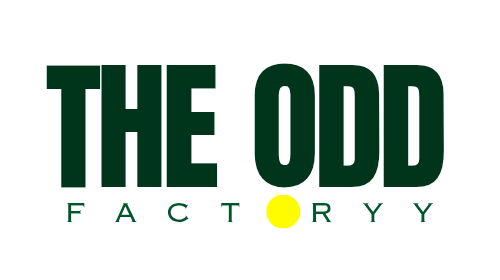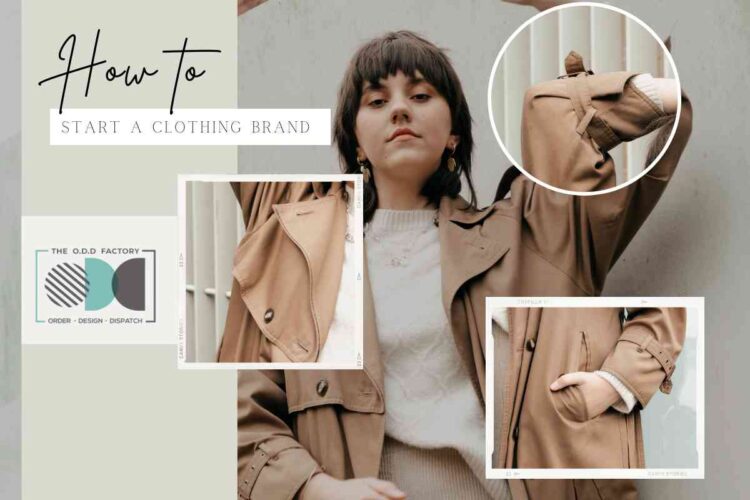Introduction
Are you passionate about fashion and dreaming of starting your own clothing brand? The fashion industry is a highly competitive and ever-evolving space, but with the right strategies and a solid foundation, you can turn your vision into a thriving business. In this comprehensive guide, we will walk you through the essential steps and provide valuable insights on how to start a clothing brand successfully. From conceptualization to production, marketing, and scaling, we\’ve got you covered.
How to Start a Clothing Brand
Embarking on the journey of starting a clothing brand requires careful planning and execution. In this section, we will outline the key steps to guide you through the process.
Defining Your Brand Identity
Before diving into the operational aspects, it\’s crucial to define your brand identity. This step lays the foundation for your entire business and influences your design, marketing, and target audience. Ask yourself questions like:
- What is the unique selling point of your brand?
- What values and aesthetics do you want to portray?
- Who is your target market?
Defining your brand identity helps you create a cohesive and consistent message that resonates with your customers.
Conducting Market Research
Understanding the market landscape is essential for a successful clothing brand. Thorough market research enables you to identify trends, analyze competitors, and determine the demand for your products. Here are a few research methods to consider:
- Online research: Explore fashion websites, blogs, and social media platforms to gain insights into the latest fashion trends and customer preferences.
- Competitor analysis: Study successful clothing brands in your niche to understand their strategies, target audience, and unique selling points.
- Customer surveys: Conduct surveys and interviews to gather valuable feedback from potential customers and refine your product offerings accordingly.
Creating a Business Plan
A well-structured business plan is a roadmap to guide your clothing brand\’s growth and success. It outlines your objectives, marketing strategies, financial projections, and operational plans. Consider including the following components in your business plan:
- Executive Summary: A concise overview of your brand and its objectives.
- Market Analysis: Detailed insights into your target market, customer demographics, and competitive landscape.
- Product Line: Description of your clothing line, including designs, materials, and pricing.
- Marketing and Sales Strategies: Plans to promote your brand, reach your target audience, and drive sales.
- Financial Projections: Projected revenue, expenses, and profitability.
A comprehensive business plan helps you stay focused, secure funding, and attract potential investors.
Establishing a Legal Entity
To ensure the legality and protection of your clothing brand, consider establishing a legal entity. The most common options include a sole proprietorship, partnership, limited liability company (LLC), or corporation. Consult with a legal professional to determine the best structure for your business and fulfill the necessary legal requirements.
Designing and Sourcing your Clothing
Now comes the exciting part—designing your clothing line. From conceptualizing designs to sourcing materials and finding manufacturers, here\’s what you need to know:
Sketching and Prototyping
Bring your creative ideas to life by sketching your designs on paper or using digital design software. Consider working with a fashion designer or pattern maker to create professional-grade sketches and patterns. Once you have the sketches ready, develop prototypes to test the fit, quality, and overall aesthetics.
Sourcing Materials
Finding reliable suppliers for fabrics, trims, and other materials is crucial. Research various textile suppliers, request samples, and compare prices and quality. It\’s important to choose materials that align with your brand\’s vision, quality standards, and target price range.
Manufacturing and Production
Partnering with manufacturers who align with your brand\’s vision and production requirements is essential. Consider factors such as production capacity, lead times, quality control processes, and social and environmental responsibility. Request samples and thoroughly vet potential manufacturing partners to ensure they meet your standards.
Building an E-commerce Website
In today\’s digital age, having an online presence is paramount for any clothing brand. A well-designed and user-friendly e-commerce website serves as a virtual storefront and allows you to reach a wider audience. Here\’s what you need to consider when building your website:
- Domain and Hosting: Choose a domain name that reflects your brand and register it with a reliable hosting provider.
- Website Design: Create a visually appealing and intuitive website design that aligns with your brand\’s aesthetics. Utilize professional web design tools or hire a web developer for optimal results.
- Product Listings: Upload high-quality images and engaging descriptions for your products. Organize your inventory into categories for easy navigation.
- Secure Payment Processing: Integrate secure payment gateways to provide a smooth and secure checkout experience for your customers.
- Optimize for SEO: Implement search engine optimization (SEO) techniques to improve your website\’s visibility and attract organic traffic from search engines.
Marketing and Promotion
Effective marketing and promotion are crucial for gaining visibility, attracting customers, and driving sales. Here are some strategies to consider:
Social Media Marketing
Leverage the power of social media platforms to showcase your clothing brand and engage with your target audience. Create captivating visual content, share behind-the-scenes stories, collaborate with influencers, and run targeted ad campaigns to increase brand awareness.
Influencer Collaborations
Partnering with influencers and fashion bloggers can significantly boost your brand\’s visibility and credibility. Identify influencers who align with your brand\’s values and aesthetics, and collaborate on sponsored posts, product reviews, or giveaways to tap into their follower base.
Content Marketing
Create valuable and informative content related to fashion, styling tips, and industry trends. Publish blog articles, video tutorials, or podcasts on your website and share them on social media platforms. This positions your brand as an authority and builds trust with your audience.
Scaling and Expansion
Once your clothing brand gains traction and experiences growth, it\’s time to scale and expand your operations. Here are a few strategies to consider:
- Wholesale and Retail Partnerships: Explore opportunities to collaborate with retailers or boutiques to reach a wider customer base.
- International Expansion: Research and assess the feasibility of expanding your brand into international markets.
- Diversify Product Offerings: Introduce new product lines, accessories, or collaborations to cater to evolving customer demands.
- Operational Efficiency: Continuously optimize your supply chain, manufacturing processes, and inventory management to streamline operations and reduce costs.
Start Your Clothing Brand Successfully
If you\’re looking for a comprehensive program to kickstart your brand, consider signing up for The Odd Factory\’s brand starter programme. By joining, you\’ll gain access to a range of resources and services designed to help you establish a scalable, sustainable, and successful fashion brand or business.
The Package Includes:
- 1-on-1 Consultation with Our Experts: Receive personalized guidance and consultation tailored to your specific requirements, concepts, and ideas. Our team of experts will assist you in planning your brand story, collection, inventory model, costing, materials, suppliers, and more.
- Fashion Brand Growth Ebook: Get valuable insights and strategies for growing your fashion brand through our comprehensive ebook. Learn about brand development, marketing, sales, and optimization techniques to maximize your brand\’s potential.
- Design Toolkit Templates: Access a range of design toolkit templates that will assist you in creating cohesive and professional brand visuals. From brand storyboards and silhouette mood boards to collection linesheets and detailed design illustrations, these templates will streamline your design process.
- 20% Off on Brand Starter Services: As part of the brand starter programme, you\’ll receive a 20% discount on various services offered by The Odd Factory. This includes assistance with brand story development, silhouette mood boards, cohesive collection linesheets, detailed design illustrations, tech packs with measurements, pattern development, fabric options, brand labels, and more.
Unlock your full entrepreneurial potential with our bespoke fashion brand consultation and gain the expertise and resources you need to succeed. By joining The Odd Factory\’s brand starter programme, you\’ll receive valuable insights, personalized consultation, and discounted services to help you launch, optimize costs, sell, and grow your brand._
To get started, visit The Odd Factory\’s Brand Starter Programme and unlock the path to a successful clothing brand. Don\’t miss out on this opportunity to turn your fashion dreams into reality.
Frequently Asked Questions (FAQs)
Q: How much capital do I need to start a clothing brand?
A: The capital required to start a clothing brand can vary significantly depending on various factors such as the scale of your operations, sourcing costs, marketing budget, and infrastructure needs. It\’s recommended to conduct a thorough financial analysis and create a detailed budget to determine the capital required for your specific business.
Q: Should I focus on a specific niche or cater to a broader audience?
A: Choosing between a niche or a broader audience depends on your brand vision, target market research, and competition analysis. While a niche focus allows you to establish a unique identity and cater to specific customer needs, targeting a broader audience provides a larger market potential. Consider your brand\’s strengths and market dynamics to make an informed decision.
Q: How canI protect my clothing brand\’s intellectual property?
A: To protect your clothing brand\’s intellectual property, you can consider the following steps:
- Trademark Registration: File for a trademark registration for your brand name, logo, or any unique designs or slogans associated with your brand. This provides legal protection against others using or copying your intellectual property.
- Copyright Protection: Copyright any original creative works such as fabric designs, patterns, or graphics that are unique to your brand. This prevents others from reproducing or using your copyrighted materials without permission.
- Design Patents: If you have unique and innovative clothing designs, you can apply for design patents to protect them from being replicated or used by others.
- Non-Disclosure Agreements (NDAs): When working with designers, manufacturers, or any external parties who have access to your proprietary information, consider having them sign NDAs to ensure confidentiality and protect your trade secrets.
- Monitor and Enforce: Regularly monitor the market for any infringements or unauthorized use of your intellectual property. If you come across any violations, consult with a legal professional to take appropriate actions to enforce your rights.
Q: What are the key factors to consider when pricing my clothing products?
A: Pricing your clothing products requires careful consideration of various factors. Here are some key factors to keep in mind:
- Cost of Production: Calculate the costs involved in manufacturing or sourcing your clothing items, including materials, labor, packaging, and shipping. This forms the base cost of your products.
- Competitor Analysis: Research the pricing strategies of similar clothing brands in your market. Take into account the quality, branding, and perceived value of their products.
- Target Market: Understand the purchasing power and preferences of your target audience. Price your products in a range that is affordable yet aligns with their perceived value.
- Profit Margin: Determine the profit margin you want to achieve for each product. This should cover your operational expenses and allow for growth and reinvestment.
- Pricing Strategy: Consider whether you want to position your brand as high-end, mid-range, or affordable. Your pricing should be consistent with your brand positioning.
Q: How can I effectively market my clothing brand on a limited budget?
A: Marketing on a limited budget requires strategic planning and utilizing cost-effective tactics. Here are some ideas:
- Social Media: Leverage social media platforms to showcase your clothing brand. Create engaging content, collaborate with micro-influencers, and utilize targeted advertising options to maximize your reach.
- Word-of-Mouth: Encourage satisfied customers to spread the word about your brand. Offer referral discounts or incentives to incentivize word-of-mouth marketing.
- Collaborations: Partner with complementary brands or local businesses for cross-promotion. This allows you to tap into each other\’s customer bases and expand your reach.
- Content Marketing: Create valuable and shareable content related to fashion, styling tips, or industry trends. Publish blog articles, video tutorials, or infographics that resonate with your target audience.
- Community Engagement: Engage with your target audience through online communities, fashion forums, or niche-specific groups. Provide valuable insights, answer questions, and establish yourself as an authority in the industry.
- Email Marketing: Build an email subscriber list and send regular newsletters with exclusive promotions, new product launches, or behind-the-scenes updates. Email marketing can be a cost-effective way to nurture customer relationships and drive repeat purchases.
Q: Should I consider sustainable practices for my clothing brand?
A: Embracing sustainable practices in the fashion industry is not only ethical but also aligns with the growing consumer demand for environmentally friendly brands. Here are a few sustainable practices to consider:
- Ethical Sourcing: Partner with suppliers who follow ethical labor practices and prioritize fair wages and working conditions.
- Environmentally Friendly Materials: Opt for sustainable and eco-friendly materials such as organic cotton, recycled fabrics, or innovative alternatives like bamboo or hemp.
- Reducing Waste: Implement measures to minimize waste in your production process, such as recycling or repurposing fabric scraps and using eco-friendly packaging materials.
- Transparency: Communicate your sustainability efforts and initiatives to your customers. Transparently share information about your supply chain, materials used, and any certifications or third-party verifications you have obtained.
By adopting sustainable practices, you can differentiate your brand, attract environmentally conscious consumers, and contribute to a greener fashion industry.
Q: How long does it typically take to establish a successful clothing brand?
A: The timeline for establishing a successful clothing brand can vary based on several factors, including your resources, market conditions, and the strategies you employ. Generally, it takes time to build brand recognition, gain customer trust, and establish a solid customer base. It\’s important to be patient, persistent, and adaptable to market trends. While some brands may achieve success relatively quickly, for others, it may take several years of consistent effort and strategic planning.
Conclusion
Starting a clothing brand can be a challenging yet rewarding endeavor. By following the steps outlined in this comprehensive guide and choosing our Brand Starter Programme if you require assistance you\’ll be well-equipped to navigate the intricacies of the fashion industry and build a successful brand. Remember, success often comes with perseverance, innovation, and a deep understanding of your target market. Now it\’s time to bring your unique vision to life and make your mark in the fashion world.
You can also check out our Other Blog – Starting a Sustainable Fashion Brand



